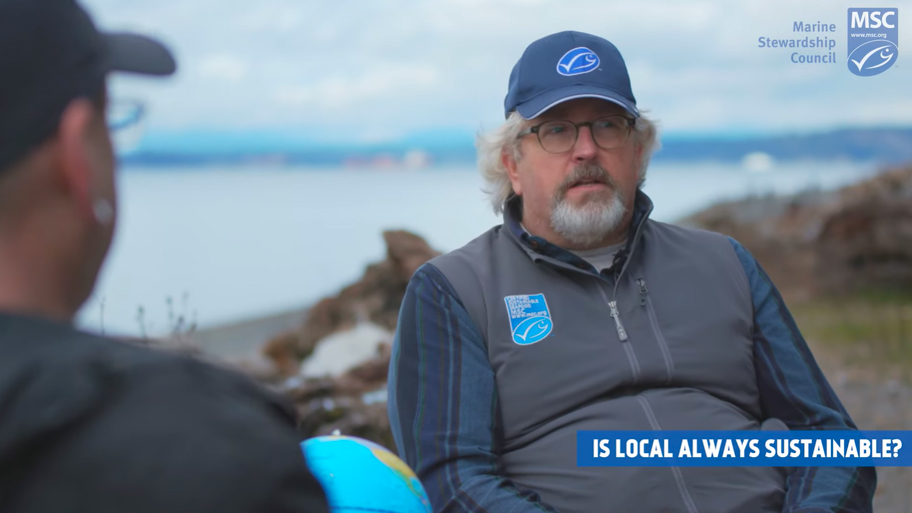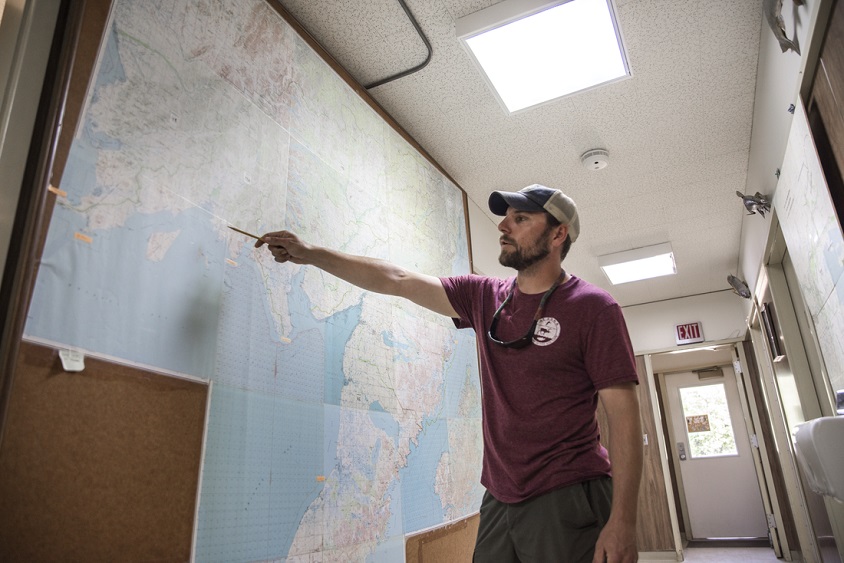While it may feel like the most sustainable seafood choice would be the most local one, that’s not always the case. With conflicting definitions of the word “local,” the distances fish travel over their lifetimes, and the complexities of the seafood supply chain, finding ocean-friendly seafood means looking beyond the "local" label and into how the product itself was caught.

Still of Dan Averill, US Senior Fisheries Manager, from Conver-sea-tions video series
How Is “Local” Seafood Defined?
You may have seen signs in your neighborhood grocery store highlighting the “local” options being sold. But did you know that there is no
universally accepted definition of “local” food?
According to the
2008 Farm Bill, a seller can claim that a product is “local” if it is a) transported less than 400 miles from its
origin, or b) within the state in which it was produced. This leaves a lot of room for the seller’s interpretation and makes it incredibly difficult to regulate these claims.
It also means that your definition of what local is may be very different than the store’s definition.
With seafood, defining “local” options becomes even harder. Fish don’t follow borders on maps, and many can spend their life cycles across various global waterways before being caught and sold at your local fish market.
The Seafood Supply Chain is Global
Seafood is a truly global resource, and its supply chain reflects that fact.
In the fishing industry, it is the norm to catch a fish off the coast of one country, ship it to another location to be processed (filleted, canned, turned into chowder, etc!),
and then sell it in an entirely separate location.
So, if a fish was caught in the US, there’s a good chance it covered a lot of ocean before landing on your dinner plate. (If you’re worried about your diet’s planetary impact, remember that wild-caught seafood is a naturally
low-carbon protein and still a great option for a
planet-friendly diet.)
Even if the product can be traced back to a local source, you cannot assume that it's been sustainably sourced. Although many US and Canadian fisheries are well-managed due to effective government regulation and sustainability commitments, overfishing,
as well as
illegal, unregulated, and destructive fishing,
still occurs within our waters.
So, how can you be sure that you’re both supporting local and sustainable fishing practices?
Look for Third-Party Seafood Certification
If you’d like to support your local fisherman while also rewarding sustainable fishing practices, look for products that have an independent, third-party certification or label—like the MSC blue fish label.
Third-party certification programs are a globally trusted process of assessment and authentication of sustainability claims in a way that is both unbiased and accurate.
The MSC is the only global wild-capture fisheries third-party certification program that simultaneously meets best practice requirements set by the United Nations Food and Agriculture Organization (UNFAO), Global Sustainable Seafood Initiative (GSSI),
and ISEAL.
There are multiple checks and balances within the MSC program to inspire confidence in our label, and these make up what we call our “MSC Assurance System”.
This MSC Assurance System includes:
- Appointing a well-respected independent, external group to oversee auditor activity.
- Requiring all auditors within our program to follow ISO 17065, an international standard that ensures consistency and fairness during the auditing process
- Making all assessment reports available to the public through our Track a Fishery website.
- Using a Peer Review College to independently assess the auditor’s reports for consistency and completeness.
What Happens When You Choose Certified Sustainable Seafood?
We understand the desire to support local, and encourage you to seek out local options that are also certified sustainable! However, if you don’t know how your local fisherman caught their seafood, you should prioritize looking for a certified sustainable
option, instead.
Each time you prioritize choosing certified sustainable seafood, you:
- Reward the fishermen who have committed to sustainable fishing—usually
at the expense of a larger haul or fatter paycheck—for the health of our ocean.
- Inspire more US and Canadian fisheries to seek certification by demanding more sustainable and local options be available.
- Support fishing communities around the world that rely on fishing for their livelihoods
- Fund research and sustainability innovation on the water—including increased protection of threatened species—through our Ocean Stewardship Fund.


